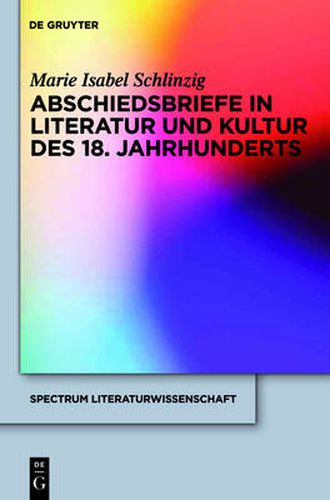Readings Newsletter
Become a Readings Member to make your shopping experience even easier.
Sign in or sign up for free!
You’re not far away from qualifying for FREE standard shipping within Australia
You’ve qualified for FREE standard shipping within Australia
The cart is loading…






This title is printed to order. This book may have been self-published. If so, we cannot guarantee the quality of the content. In the main most books will have gone through the editing process however some may not. We therefore suggest that you be aware of this before ordering this book. If in doubt check either the author or publisher’s details as we are unable to accept any returns unless they are faulty. Please contact us if you have any questions.
This study focuses on the significance and functions of last letters written before death in the literature and culture of the eighteenth century. Last letters are understood in the study as an epistolary sub-genre with a shared theme and distinctive features which are shaped by culture-specific rituals of dying and which are subject to historical change. By drawing on epistolary theory, the analysis shows that last letters in the period were characterized by particular conventions, functions, and modes of reception, which were not codified but established and transmitted through usage and public or private discourse, primarily with the help of examples. Based on close readings of literary texts and published historical letters written in German, English, and French, it is argued that there were two predominant trends in the usage of fictional and real last letters. On the one hand, given the special authority attributed to the words of the dying, last letters were written to conform to contemporary ideals of a ‘good death’ and then used as examples for the edification, education, and consolation of their readers. In contrast, other authors, suicides in particular, used the protection death and the written medium afforded them to communicate freely and in a consciously nonconformist manner. They revealed intimate secrets, tried to legitimate their actions, or expressed unconventional beliefs. In real life and fiction, last letters served the dying as a means of shaping posteriority’s reaction, and retaining control of their bodies or corpses.
$9.00 standard shipping within Australia
FREE standard shipping within Australia for orders over $100.00
Express & International shipping calculated at checkout
This title is printed to order. This book may have been self-published. If so, we cannot guarantee the quality of the content. In the main most books will have gone through the editing process however some may not. We therefore suggest that you be aware of this before ordering this book. If in doubt check either the author or publisher’s details as we are unable to accept any returns unless they are faulty. Please contact us if you have any questions.
This study focuses on the significance and functions of last letters written before death in the literature and culture of the eighteenth century. Last letters are understood in the study as an epistolary sub-genre with a shared theme and distinctive features which are shaped by culture-specific rituals of dying and which are subject to historical change. By drawing on epistolary theory, the analysis shows that last letters in the period were characterized by particular conventions, functions, and modes of reception, which were not codified but established and transmitted through usage and public or private discourse, primarily with the help of examples. Based on close readings of literary texts and published historical letters written in German, English, and French, it is argued that there were two predominant trends in the usage of fictional and real last letters. On the one hand, given the special authority attributed to the words of the dying, last letters were written to conform to contemporary ideals of a ‘good death’ and then used as examples for the edification, education, and consolation of their readers. In contrast, other authors, suicides in particular, used the protection death and the written medium afforded them to communicate freely and in a consciously nonconformist manner. They revealed intimate secrets, tried to legitimate their actions, or expressed unconventional beliefs. In real life and fiction, last letters served the dying as a means of shaping posteriority’s reaction, and retaining control of their bodies or corpses.